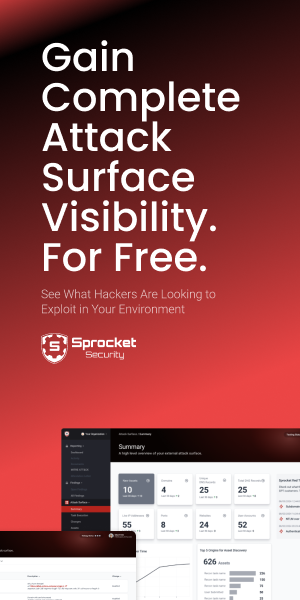In cybersecurity circles, one idea has quietly persisted for years: “Rotate your pentesters every one or two years so you get fresh eyes.” On the surface, it sounds reasonable. In practice, it is often counterproductive.
This article explains how that myth took root, why it fails as environments and threat landscapes evolve, and how a continuity-based approach that is measured, structured, and adaptive yields stronger outcomes.
The Origins: Audits, Business Models, and Habit
The notion of rotating auditors or external reviewers originates from traditional financial and compliance practices. In auditing, rotating firms or personnel is sometimes used to reduce familiarity bias or overfamiliarity with an organization’s books. That thinking migrated into cybersecurity, often without enough scrutiny.
Over time, consulting firms and penetration test vendors adopted the “fresh eyes” message as a sales narrative. It allowed engagements to be renewed, scopes to be re-baselined, and new teams to rescan what prior testers had already evaluated. In many cases, switching testers became a default instead of a deliberate strategy.
That model works better for vendor margins than for security maturity. Each wave of testers must relearn environments, user flows, controls, past findings, and assumptions. Instead of progressing, the organization resets. In effect, rotating testers introduces a recurring cost of relearning.
Meanwhile, attackers do not rotate. They persist, adapt, and evolve. Their behavior accumulates over time. Testing should not restart every cycle when adversaries never do.
Why Rotation Breaks Momentum
Loss of Institutional Memory
When a new testing team begins, prior context is often lost. Knowledge about previously exploited paths, unsuccessful attempts, and custom business logic gets obscured. That background is essential for chaining attacks, developing novel exploitation paths, and understanding real-world context.
Repeated Discovery, Not Innovation
New testers often retread ground that previous testers already explored. That leads to duplication of effort. Meanwhile, deeper or contextual issues that require continuity may go uncovered because no one is following the breadcrumbs from prior testing cycles.
Resetting Defender-Test Feedback Loops
Defense teams improve with feedback through logs, mitigations, alerts, and detection tuning. When testers rotate, that continuous feedback loop is broken. The next team may not fully understand which mitigations were attempted, which alerts were tuned, and what signal-to-noise tradeoffs exist. That makes each cycle less efficient.
Misalignment with Adversary Behavior
Real-world attackers maintain presence, pivot across assets, evolve tools, and remain persistent. Rotating testers treats each cycle as an isolated engagement. It fails to emulate the long-term threat models that mature adversaries use over weeks, months, or even years.
What Actually Works: Continuity Anchored by Frameworks
To replace the myth, security teams should adopt a model grounded in continuity, mapped to repeatable frameworks, and tied to measurable progress.
1. Map to Standards (for example, MITRE ATT&CK)
When testing actions and findings are mapped to a standard adversary taxonomy like MITRE ATT&CK, organizations gain continuity without monotony. Teams can measure which tactics and techniques were tested across cycles, which were missed, and how coverage evolves. MITRE continuously refines its ATT&CK framework to better represent real-world adversary behavior, including cross-platform and cloud-specific techniques
2. Track Test Evolution
Rather than resetting tests, treat each cycle as an iteration. Build on prior exploit paths, test for posture changes, validate mitigations, and escalate paths that resisted fixes. Each test should push forward rather than restart.
3. Tie into the Defender Feedback Loop
Your penetration testing program should feed directly into detection engineering, alert tuning, and incident response improvements. When testers and defenders share context over time, it enables defensive hardening, false positive reduction, and targeted coverage.
4. Use Hybrid Testing Modes
Consistency does not mean stagnation. While maintaining a core testing team for continuity, add diversity by rotating sub-teams, varying tools, or introducing new attack vectors. The goal is evolution within continuity, not replacement for its own sake.
5. Measure Results and Progress
Coverage is not about counting vulnerabilities. It is about how maturity advances. Are you testing against more advanced techniques? Are findings closing faster? Is your attack surface shrinking? Are detections improving? These metrics show growth far more than a new set of eyes ever could.
Real-World Context and Industry Alignment
- MITRE ATT&CK Evaluations: In recent rounds, MITRE expanded evaluations to include ransomware and multi-stage adversary behaviors, helping organizations benchmark their detection and mitigation capabilities
- Threat Research on TTP Correlation: A 2024 analysis of 594 adversarial techniques found that successful attacks often rely on chaining related techniques across multiple stages (source: arXiv:2401.01865). This reinforces the importance of continuity, as fragmented testing rarely captures these relationships.
- Continuous Assurance Trends: Modern frameworks such as Continuous Threat Exposure Management (CTEM) emphasize ongoing validation over point-in-time assessments, underscoring the industry’s shift toward iterative and context-driven testing
Practical Steps for Security Teams
- Map your current testing results to ATT&CK to establish baseline technique coverage.
- Identify critical TTPs relevant to your industry, such as credential access or lateral movement.
- Retain at least part of your testing core to preserve institutional knowledge.
- Integrate test data directly into SOC and detection workflows.
- Track progress with real metrics such as mean time to remediation, recurring finding rates, and evolving technique coverage.
Conclusion: Continuous Insight Over Cyclical Resets
Rotating pentesters every year or two sounds tidy, but it undermines the very continuity and depth that maturity requires. Real adversaries evolve, adapt, and persist. Testing should reflect that, not reset.
Consistency within evolution, measured, mapped, and feedback-driven, is what separates meaningful offensive validation from compliance-driven testing.
If your test results feel repetitive, disconnected, or incremental, it may not be your environment that is stagnating. It may be your testing model.



